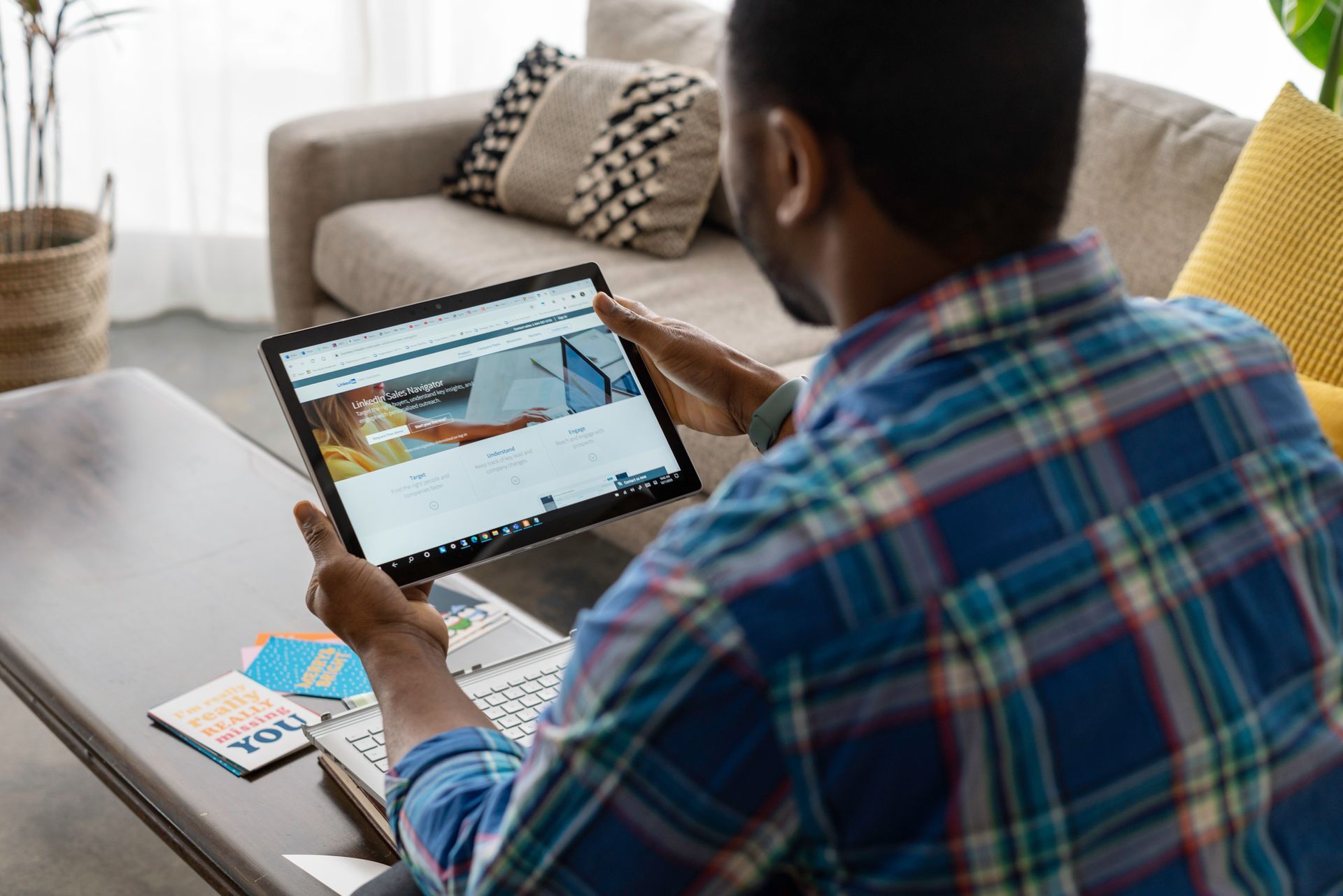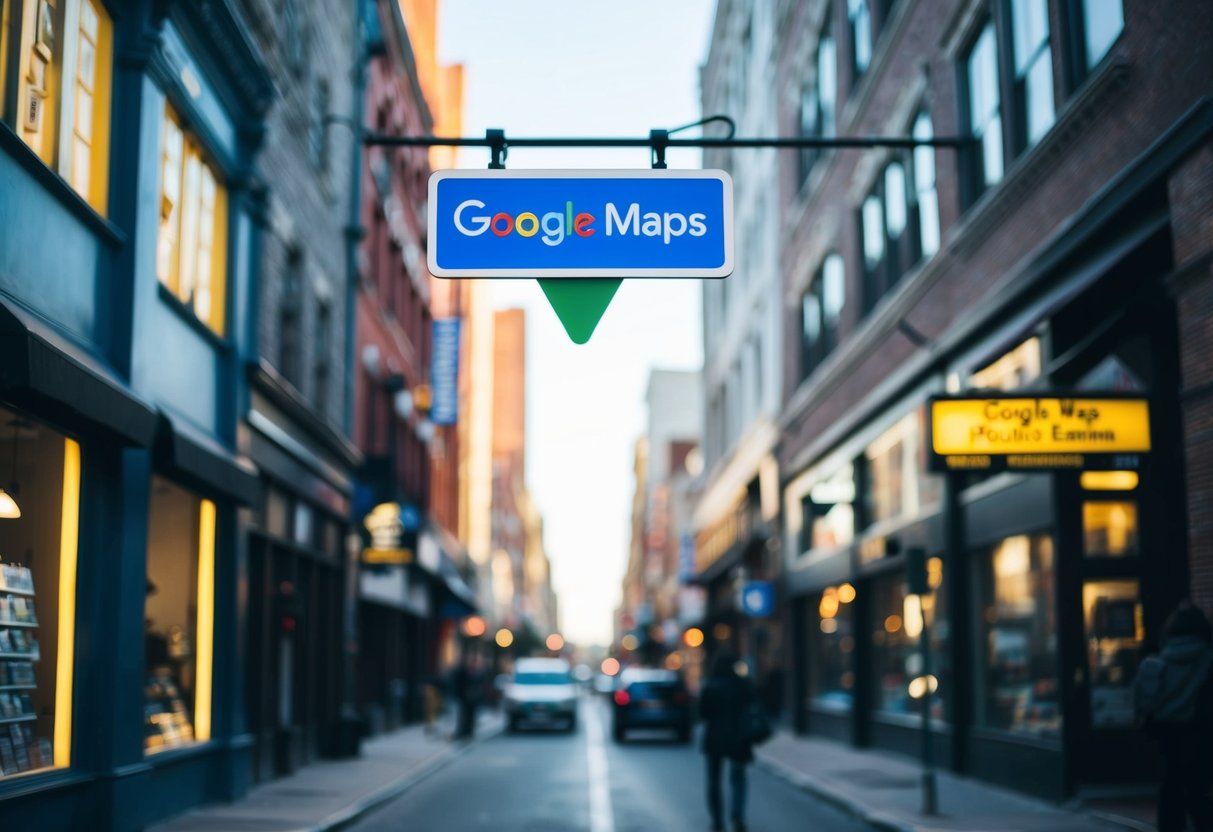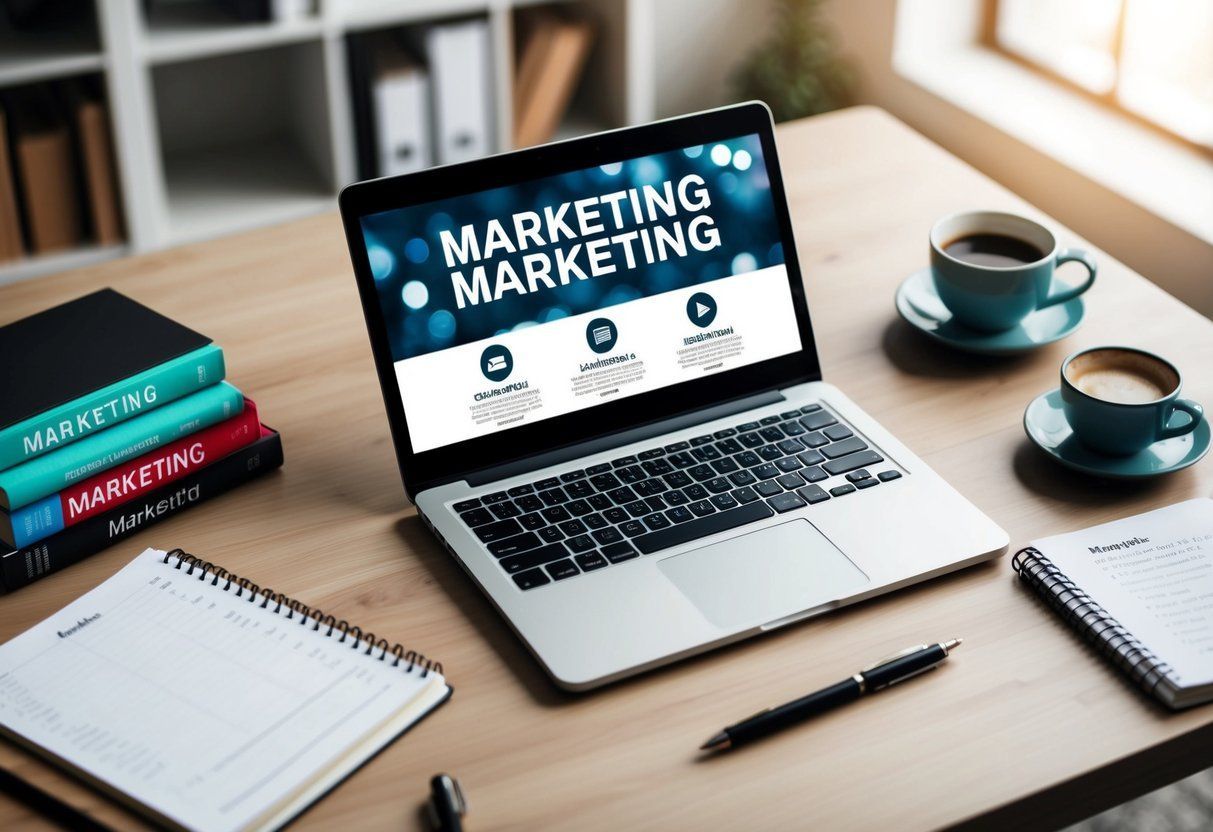New York City Lead Generation Los Angeles, CA Lead Generation Chicago, IL Lead Generation Houston, TX Lead Generation Phoenix, AZ Lead Generation Philadelphia, PA Lead Generation San Antonio, TX Lead Generation San Diego, CA Lead Generation Dallas, TX Lead Generation San Jose, CA Lead Generation Austin, TX Lead Generation Jacksonville, FL Lead Generation Fort Worth, TX Lead Generation Columbus, OH Lead Generation Indianapolis, IN Lead Generation Charlotte, NC Lead Generation San Francisco, CA Lead Generation Louisville, KY Lead Generation Seattle, WA Lead Generation Nashville, TN Lead Generation Denver, CO Lead Generation Washington, DC Lead Generation Oklahoma City, OK Lead Generation El Paso, TX Lead Generation Boston, MA Lead Generation Portland, OR Lead Generation Las Vegas, NV Lead Generation Detroit, MI Lead Generation Memphis, TN Lead Generation Baltimore, MD Lead Generation Milwaukee, WI Lead Generation Albuquerque, NM Lead Generation Tucson, AZ Lead Generation Fresno, CA Lead Generation Sacramento, CA Lead Generation Kansas City, MO Lead Generation Mesa, AZ Lead Generation Atlanta, GA Lead Generation Omaha, NE Lead Generation Colorado Springs, CO Lead Generation Raleigh, NC Lead Generation Long Beach, CA Lead Generation Virginia Beach, VA Lead Generation Miami, FL Lead Generation Oakland, CA Lead Generation Minneapolis, MN Lead Generation Tulsa, OK Lead Generation Bakersfield, CA Lead Generation Wichita, KS Lead Generation San Antonio, TX Lead Generation Las Vegas, NV Lead Generation Louisville, KY Lead Generation Milwaukee, WI Lead Generation Albuquerque, NM Lead Generation Tucson, AZ Lead Generation Fresno, CA Lead Generation Sacramento, CA Lead Generation Kansas City, MO Lead Generation Mesa, AZ Lead Generation Omaha, NE Lead Generation Colorado Springs, CO Lead Generation Long Beach, CA Lead Generation Virginia Beach, VA Lead Generation Oakland, CA Lead Generation Tulsa, OK Lead Generation Bakersfield, CA Lead Generation Wichita, KS Lead Generation Arlington, TX Lead Generation Tampa, FL Lead Generation Anaheim, CA Lead Generation Aurora, CO Lead Generation Santa Ana, CA Lead Generation Riverside, CA Lead Generation Corpus Christi, TX Lead Generation Lexington, KY Lead Generation Pittsburgh, PA Lead Generation Anchorage, AK Lead Generation Stockton, CA Lead Generation Cincinnati, OH Lead Generation St. Paul, MN Lead Generation Toledo, OH Lead Generation Newark, NJ Lead Generation Plano, TX Lead Generation Henderson, NV Lead Generation Lincoln, NE Lead Generation Orlando, FL Lead Generation Jersey City, NJ Lead Generation Chula Vista, CA Lead Generation Fort Wayne, IN Lead Generation St. Petersburg, FL Lead Generation Chandler, AZ Lead Generation Laredo, TX Lead Generation Norfolk, VA Lead Generation Durham, NC Lead Generation Madison, WI Lead Generation Lubbock, TX Lead Generation Irvine, CA Lead Generation Winston-Salem, NC Lead Generation Glendale, AZ Lead Generation New York City Dentist Marketing Los Angeles, CA Dentist Marketing Chicago, IL Dentist Marketing Houston, TX Dentist Marketing Phoenix, AZ Dentist Marketing Philadelphia, PA Dentist Marketing San Antonio, TX Dentist Marketing San Diego, CA Dentist Marketing Dallas, TX Dentist Marketing San Jose, CA Dentist Marketing Austin, TX Dentist Marketing Jacksonville, FL Dentist Marketing Fort Worth, TX Dentist Marketing Columbus, OH Dentist Marketing Indianapolis, IN Dentist Marketing Charlotte, NC Dentist Marketing San Francisco, CA Dentist Marketing Louisville, KY Dentist Marketing Seattle, WA Dentist Marketing Nashville, TN Dentist Marketing Denver, CO Dentist Marketing Washington, Dentist Marketing Oklahoma City, OK Dentist Marketing El Paso, TX Dentist Marketing Boston, MA Dentist Marketing Portland, OR Dentist Marketing Las Vegas, NV Dentist Marketing Detroit, MI Dentist Marketing Memphis, TN Dentist Marketing Baltimore, MD Dentist Marketing Milwaukee, WI Dentist Marketing Albuquerque, NM Dentist Marketing Tucson, AZ Dentist Marketing Fresno, CA Dentist Marketing Sacramento, CA Dentist Marketing Kansas City, MO Dentist Marketing Mesa, AZ Dentist Marketing Atlanta, GA Dentist Marketing Omaha, NE Dentist Marketing Colorado Springs, CO Dentist Marketing Raleigh, NC Dentist Marketing Long Beach, CA Dentist Marketing Virginia Beach, VA Dentist Marketing Miami, FL Dentist Marketing Oakland, CA Dentist Marketing Minneapolis, MN Dentist Marketing Tulsa, OK Dentist Marketing Bakersfield, CA Dentist Marketing Wichita, KS Dentist Marketing Arlington, VA Dentist Marketing LeadLane Terms Service in Sunland, CA LeadLane Design Services in Sunland, CA Logo Design in Sunland, CA Business Card Design in Sunland, CA Brand Guide Services in Sunland, CA Stationery Design in Sunland, CA New York City, NY Print Shop Lead Generation Los Angeles, CA Print Shop Lead Generation Chicago, IL Print Shop Lead Generation Houston, TX Print Shop Lead Generation Phoenix, AZ Print Shop Lead Generation Philadelphia, PA Print Shop Lead Generation San Antonio, TX Print Shop Lead Generation San Diego, CA Print Shop Lead Generation Dallas, TX Print Shop Lead Generation San Jose, CA Print Shop Lead Generation Austin, TX Print Shop Lead Generation Jacksonville, FL Print Shop Lead Generation Fort Worth, TX Print Shop Lead Generation Columbus, OH Print Shop Lead Generation Indianapolis, IN Print Shop Lead Generation Charlotte, NC Print Shop Lead Generation San Francisco, CA Print Shop Lead Generation Louisville, KY Print Shop Lead Generation Seattle, WA Print Shop Lead Generation Nashville, TN Print Shop Lead Generation Denver, CO Print Shop Lead Generation Washington, Print Shop Lead Generation Oklahoma City, OK Print Shop Lead Generation El Paso, TX Print Shop Lead Generation Boston, MA Print Shop Lead Generation Portland, OR Print Shop Lead Generation Las Vegas, NV Print Shop Lead Generation Detroit, MI Print Shop Lead Generation Memphis, TN Print Shop Lead Generation Baltimore, MD Print Shop Lead Generation Milwaukee, WI Print Shop Lead Generation Albuquerque, NM Print Shop Lead Generation Tucson, AZ Print Shop Lead Generation Fresno, CA Print Shop Lead Generation Sacramento, CA Print Shop Lead Generation Kansas City, MO Print Shop Lead Generation Mesa, AZ Print Shop Lead Generation Atlanta, GA Print Shop Lead Generation Omaha, NE Print Shop Lead Generation Colorado Springs, CO Print Shop Lead Generation Raleigh, NC Print Shop Lead Generation Long Beach, CA Print Shop Lead Generation Virginia Beach, VA Print Shop Lead Generation Miami, FL Print Shop Lead Generation Oakland, CA Print Shop Lead Generation Minneapolis, MN Print Shop Lead Generation Tulsa, OK Print Shop Lead Generation Bakersfield, CA Print Shop Lead Generation Wichita, KS Print Shop Lead Generation San Antonio, TX Print Shop Lead Generation Las Vegas, NV Print Shop Lead Generation Louisville, KY Print Shop Lead Generation Milwaukee, WI Print Shop Lead Generation Albuquerque, NM Print Shop Lead Generation Tucson, AZ Print Shop Lead Generation Fresno, CA Print Shop Lead Generation Sacramento, CA Print Shop Lead Generation Kansas City, MO Print Shop Lead Generation Mesa, AZ Print Shop Lead Generation Omaha, NE Print Shop Lead Generation Colorado Springs, CO Print Shop Lead Generation Long Beach, CA Print Shop Lead Generation Virginia Beach, VA Print Shop Lead Generation Oakland, CA Print Shop Lead Generation Tulsa, OK Print Shop Lead Generation Bakersfield, CA Print Shop Lead Generation Wichita, KS Print Shop Lead Generation Arlington, TX Print Shop Lead Generation Tampa, FL Print Shop Lead Generation Anaheim, CA Print Shop Lead Generation Aurora, CO Print Shop Lead Generation Santa Ana, CA Print Shop Lead Generation Riverside, CA Print Shop Lead Generation Corpus Christi, TX Print Shop Lead Generation Lexington, KY Print Shop Lead Generation Pittsburgh, PA Print Shop Lead Generation Anchorage, AK Print Shop Lead Generation Stockton, CA Print Shop Lead Generation Cincinnati, OH Print Shop Lead Generation St. Paul, MN Print Shop Lead Generation Toledo, OH Print Shop Lead Generation Newark, NJ Print Shop Lead Generation Plano, TX Print Shop Lead Generation Henderson, NV Print Shop Lead Generation Lincoln, NE Print Shop Lead Generation Orlando, FL Print Shop Lead Generation Jersey City, NJ Print Shop Lead Generation Chula Vista, CA Print Shop Lead Generation Fort Wayne, IN Print Shop Lead Generation St. Petersburg, FL Print Shop Lead Generation Chandler, AZ Print Shop Lead Generation Laredo, TX Print Shop Lead Generation Norfolk, VA Print Shop Lead Generation Durham, NC Print Shop Lead Generation Madison, WI Print Shop Lead Generation Lubbock, TX Print Shop Lead Generation Irvine, CA Print Shop Lead Generation Winston-Salem, NC Print Shop Lead Generation Glendale, AZ Print Shop Lead Generation New York City, NY Sign Company Lead Generation Los Angeles, CA Sign Company Lead Generation Chicago, IL Sign Company Lead Generation Houston, TX Sign Company Lead Generation Phoenix, AZ Sign Company Lead Generation Philadelphia, PA Sign Company Lead Generation San Antonio, TX Sign Company Lead Generation San Diego, CA Sign Company Lead Generation Dallas, TX Sign Company Lead Generation San Jose, CA Sign Company Lead Generation Austin, TX Sign Company Lead Generation Jacksonville, FL Sign Company Lead Generation Fort Worth, TX Sign Company Lead Generation Columbus, OH Sign Company Lead Generation Indianapolis, IN Sign Company Lead Generation Charlotte, NC Sign Company Lead Generation San Francisco, CA Sign Company Lead Generation Louisville, KY Sign Company Lead Generation Seattle, WA Sign Company Lead Generation Nashville, TN Sign Company Lead Generation Denver, CO Sign Company Lead Generation Washington, DC Sign Company Lead Generation Oklahoma City, OK Sign Company Lead Generation El Paso, TX Sign Company Lead Generation Boston, MA Sign Company Lead Generation Portland, OR Sign Company Lead Generation Las Vegas, NV Sign Company Lead Generation Detroit, MI Sign Company Lead Generation Memphis, TN Sign Company Lead Generation Baltimore, MD Sign Company Lead Generation Milwaukee, WI Sign Company Lead Generation Albuquerque, NM Sign Company Lead Generation Tucson, AZ Sign Company Lead Generation Fresno, CA Sign Company Lead Generation Sacramento, CA Sign Company Lead Generation Kansas City, MO Sign Company Lead Generation Mesa, AZ Sign Company Lead Generation Atlanta, GA Sign Company Lead Generation Omaha, NE Sign Company Lead Generation Colorado Springs, CO Sign Company Lead Generation Raleigh, NC Sign Company Lead Generation Long Beach, CA Sign Company Lead Generation Virginia Beach, VA Sign Company Lead Generation Miami, FL Sign Company Lead Generation Oakland, CA Sign Company Lead Generation Minneapolis, MN Sign Company Lead Generation Tulsa, OK Sign Company Lead Generation Bakersfield, CA Sign Company Lead Generation Wichita, KS Sign Company Lead Generation San Antonio, TX Sign Company Lead Generation Las Vegas, NV Sign Company Lead Generation Louisville, KY Sign Company Lead Generation Milwaukee, WI Sign Company Lead Generation Albuquerque, NM Sign Company Lead Generation Tucson, AZ Sign Company Lead Generation Fresno, CA Sign Company Lead Generation Sacramento, CA Sign Company Lead Generation Kansas City, MO Sign Company Lead Generation Mesa, AZ Sign Company Lead Generation Omaha, NE Sign Company Lead Generation Colorado Springs, CO Sign Company Lead Generation Long Beach, CA Sign Company Lead Generation Virginia Beach, VA Sign Company Lead Generation Oakland, CA Sign Company Lead Generation Tulsa, OK Sign Company Lead Generation Bakersfield, CA Sign Company Lead Generation Wichita, KS Sign Company Lead Generation Arlington, TX Sign Company Lead Generation Tampa, FL Sign Company Lead Generation Anaheim, CA Sign Company Lead Generation Aurora, CO Sign Company Lead Generation Santa Ana, CA Sign Company Lead Generation Riverside, CA Sign Company Lead Generation Corpus Christi, TX Sign Company Lead Generation Lexington, KY Sign Company Lead Generation Pittsburgh, PA Sign Company Lead Generation Anchorage, AK Sign Company Lead Generation Stockton, CA Sign Company Lead Generation Cincinnati, OH Sign Company Lead Generation St. Paul, MN Sign Company Lead Generation Toledo, OH Sign Company Lead Generation Newark, NJ Sign Company Lead Generation Plano, TX Sign Company Lead Generation Henderson, NV Sign Company Lead Generation Lincoln, NE Sign Company Lead Generation Orlando, FL Sign Company Lead Generation Jersey City, NJ Sign Company Lead Generation Chula Vista, CA Sign Company Lead Generation Fort Wayne, IN Sign Company Lead Generation St. Petersburg, FL Sign Company Lead Generation Chandler, AZ Sign Company Lead Generation Laredo, TX Sign Company Lead Generation Norfolk, VA Sign Company Lead Generation Durham, NC Sign Company Lead Generation Madison, WI Sign Company Lead Generation Lubbock, TX Sign Company Lead Generation Irvine, CA Sign Company Lead Generation Winston-Salem, NC Sign Company Lead Generation Glendale, AZ Sign Company Lead Generation New York City Home Service Lead Generation Los Angeles, CA Home Service Lead Generation Chicago, IL Home Service Lead Generation Houston, TX Home Service Lead Generation Phoenix, AZ Home Service Lead Generation Philadelphia, PA Home Service Lead Generation San Antonio, TX Home Service Lead Generation San Diego, CA Home Service Lead Generation Dallas Home Service Lead Generation San Jose, CA Home Service Lead Generation Austin, TX Home Service Lead Generation Jacksonville, FL Home Service Lead Generation Fort Worth, TX Home Service Lead Generation Columbus Home Service Lead Generation Indianapolis, IN Home Service Lead Generation Charlotte, NC Home Service Lead Generation San Francisco, CA Home Service Lead Generation Louisville, KY Home Service Lead Generation Seattle, WA Home Service Lead Generation Nashville Home Service Lead Generation Denver Home Service Lead Generation Washington, Home Service Lead Generation Oklahoma City Home Service Lead Generation El Paso, TX Home Service Lead Generation Boston Home Service Lead Generation Portland, OR Home Service Lead Generation Las Vegas, NV Home Service Lead Generation Detroit, MI Home Service Lead Generation Memphis, TN Home Service Lead Generation Baltimore, MD Home Service Lead Generation Milwaukee, WI Home Service Lead Generation Albuquerque, NM Home Service Lead Generation Tucson, AZ Home Service Lead Generation Fresno, CA Home Service Lead Generation Sacramento, CA Home Service Lead Generation Kansas City Home Service Lead Generation Mesa, AZ Home Service Lead Generation Atlanta, GA Home Service Lead Generation Omaha Home Service Lead Generation Colorado Springs, CO Home Service Lead Generation Raleigh, NC Home Service Lead Generation Long Beach, CA Home Service Lead Generation Virginia Beach, VA Home Service Lead Generation Miami, FL Home Service Lead Generation Oakland, CA Home Service Lead Generation Minneapolis, MN Home Service Lead Generation Tulsa, OK Home Service Lead Generation Bakersfield, CA Home Service Lead Generation Wichita, KS Home Service Lead Generation San Antonio, TX Home Service Lead Generation Las Vegas, NV Home Service Lead Generation Louisville, KY Home Service Lead Generation Milwaukee, WI Home Service Lead Generation Albuquerque, NM Home Service Lead Generation Tucson, AZ Home Service Lead Generation Fresno, CA Home Service Lead Generation Sacramento, CA Home Service Lead Generation Kansas City, MO Home Service Lead Generation Mesa, AZ Home Service Lead Generation Omaha, NE Home Service Lead Generation Colorado Springs, CO Home Service Lead Generation Long Beach, CA Home Service Lead Generation Virginia Beach, VA Home Service Lead Generation Oakland, CA Home Service Lead Generation Tulsa, OK Home Service Lead Generation Bakersfield, CA Home Service Lead Generation Wichita, KS Home Service Lead Generation Arlington, TX Home Service Lead Generation Tampa, FL Home Service Lead Generation Anaheim, CA Home Service Lead Generation Aurora, CO Home Service Lead Generation Santa Ana, CA Home Service Lead Generation Riverside, CA Home Service Lead Generation Corpus Christi, TX Home Service Lead Generation Lexington, KY Home Service Lead Generation Pittsburgh, PA Home Service Lead Generation Anchorage, AK Home Service Lead Generation Stockton, CA Home Service Lead Generation Cincinnati, OH Home Service Lead Generation St. Paul, MN Home Service Lead Generation Toledo, OH Home Service Lead Generation Newark, NJ Home Service Lead Generation Plano, TX Home Service Lead Generation Henderson, NV Home Service Lead Generation Lincoln, NE Home Service Lead Generation Orlando, FL Home Service Lead Generation Jersey City, NJ Home Service Lead Generation Chula Vista, CA Home Service Lead Generation Fort Wayne, IN Home Service Lead Generation St. Petersburg, FL Home Service Lead Generation Chandler, AZ Home Service Lead Generation Laredo, TX Home Service Lead Generation Norfolk, VA Home Service Lead Generation Durham, NC Home Service Lead Generation Madison, WI Home Service Lead Generation Lubbock, TX Home Service Lead Generation Irvine, CA Home Service Lead Generation Winston-Salem, NC Home Service Lead Generation Glendale, AZ Home Service Lead Generation New York City, Roofing Company Lead Generation Los Angeles, CA Roofing Company Lead Generation Chicago Roofing Company Lead Generation Houston, TX Roofing Company Lead Generation Phoenix, AZ Roofing Company Lead Generation Philadelphia, PA Roofing Company Lead Generation San Antonio, TX Roofing Company Lead Generation San Diego, CA Roofing Company Lead Generation Dallas, TX Roofing Company Lead Generation San Jose, CA Roofing Company Lead Generation Austin, TX Roofing Company Lead Generation Jacksonville, FL Roofing Company Lead Generation Fort Worth, TX Roofing Company Lead Generation Columbus Roofing Company Lead Generation Indianapolis, IN Roofing Company Lead Generation Charlotte, NC Roofing Company Lead Generation San Francisco, CA Roofing Company Lead Generation Louisville, KY Roofing Company Lead Generation Seattle, WA Roofing Company Lead Generation Nashville Roofing Company Lead Generation Denver, CO Roofing Company Lead Generation Washington Roofing Company Lead Generation Oklahoma City, OK Roofing Company Lead Generation El Paso, TX Roofing Company Lead Generation Boston, MA Roofing Company Lead Generation Portland, OR Roofing Company Lead Generation Las Vegas, NV Roofing Company Lead Generation Detroit, MI Roofing Company Lead Generation Memphis, TN Roofing Company Lead Generation Baltimore, MD Roofing Company Lead Generation Milwaukee, WI Roofing Company Lead Generation Albuquerque, NM Roofing Company Lead Generation Tucson, AZ Roofing Company Lead Generation Fresno, CA Roofing Company Lead Generation Sacramento, CA Roofing Company Lead Generation Kansas City, MO Roofing Company Lead Generation Mesa, AZ Roofing Company Lead Generation Atlanta Roofing Company Lead Generation Omaha, NE Roofing Company Lead Generation Colorado Springs, CO Roofing Company Lead Generation Raleigh, NC Roofing Company Lead Generation Long Beach, CA Roofing Company Lead Generation Virginia Beach, VA Roofing Company Lead Generation Miami, FL Roofing Company Lead Generation Oakland, CA Roofing Company Lead Generation Minneapolis, MN Roofing Company Lead Generation Tulsa, OK Roofing Company Lead Generation Bakersfield, CA Roofing Company Lead Generation Wichita, KS Roofing Company Lead Generation San Antonio, TX Roofing Company Lead Generation Las Vegas, NV Roofing Company Lead Generation Louisville, KY Roofing Company Lead Generation Milwaukee, WI Roofing Company Lead Generation Albuquerque, NM Roofing Company Lead Generation Tucson, AZ Roofing Company Lead Generation Fresno, CA Roofing Company Lead Generation Sacramento, CA Roofing Company Lead Generation Kansas City, MO Roofing Company Lead Generation Mesa, AZ Roofing Company Lead Generation Omaha, NE Roofing Company Lead Generation Colorado Springs, CO Roofing Company Lead Generation Long Beach, CA Roofing Company Lead Generation Virginia Beach, VA Roofing Company Lead Generation Oakland, CA Roofing Company Lead Generation Tulsa, OK Roofing Company Lead Generation Bakersfield, CA Roofing Company Lead Generation Wichita, KS Roofing Company Lead Generation Arlington, TX Roofing Company Lead Generation Tampa, FL Roofing Company Lead Generation Anaheim, CA Roofing Company Lead Generation Aurora, CO Roofing Company Lead Generation Santa Ana, CA Roofing Company Lead Generation Riverside, CA Roofing Company Lead Generation Corpus Christi, TX Roofing Company Lead Generation Lexington, KY Roofing Company Lead Generation Pittsburgh, PA Roofing Company Lead Generation Anchorage, AK Roofing Company Lead Generation Stockton, CA Roofing Company Lead Generation Cincinnati, OH Roofing Company Lead Generation St. Paul, MN Roofing Company Lead Generation Toledo, OH Roofing Company Lead Generation Newark, NJ Roofing Company Lead Generation Plano, TX Roofing Company Lead Generation Henderson, NV Roofing Company Lead Generation Lincoln, NE Roofing Company Lead Generation Orlando, FL Roofing Company Lead Generation Jersey City, NJ Roofing Company Lead Generation Chula Vista, CA Roofing Company Lead Generation Fort Wayne, IN Roofing Company Lead Generation St. Petersburg, FL Roofing Company Lead Generation Chandler, AZ Roofing Company Lead Generation Laredo, TX Roofing Company Lead Generation Norfolk, VA Roofing Company Lead Generation Durham, NC Roofing Company Lead Generation Madison, WI Roofing Company Lead Generation Lubbock, TX Roofing Company Lead Generation Irvine, CA Roofing Company Lead Generation Winston-Salem, NC Roofing Company Lead Generation Glendale, AZ Roofing Company Lead Generation New York City, NY Home Inspection Leads Los Angeles, CA Home Inspection Leads Chicago, IL Home Inspection Leads Houston, TX Home Inspection Leads Phoenix, AZ Home Inspection Leads Philadelphia, PA Home Inspection Leads San Antonio, TX Home Inspection Leads San Diego, CA Home Inspection Leads Dallas, TX Home Inspection Leads San Jose, CA Home Inspection Leads Austin, TX Home Inspection Leads Jacksonville, FL Home Inspection Leads Fort Worth, TX Home Inspection Leads Columbus, OH Home Inspection Leads Indianapolis, IN Home Inspection Leads Charlotte, NC Home Inspection Leads San Francisco, CA Home Inspection Leads Louisville, KY Home Inspection Leads Seattle, WA Home Inspection Leads Nashville, TN Home Inspection Leads Denver, CO Home Inspection Leads Washington, Home Inspection Leads Oklahoma City, OK Home Inspection Leads El Paso, TX Home Inspection Leads Boston Home Inspection Leads Portland, OR Home Inspection Leads Las Vegas, NV Home Inspection Leads Detroit, MI Home Inspection Leads Memphis, TN Home Inspection Leads Baltimore, MD Home Inspection Leads Milwaukee, WI Home Inspection Leads Albuquerque, NM Home Inspection Leads Tucson, AZ Home Inspection Leads Fresno, CA Home Inspection Leads Sacramento, CA Home Inspection Leads Kansas City, MO Home Inspection Leads Mesa, AZ Home Inspection Leads Atlanta, GA Home Inspection Leads Omaha, NE Home Inspection Leads Colorado Springs, CO Home Inspection Leads Raleigh, NC Home Inspection Leads Long Beach, CA Home Inspection Leads Virginia Beach, VA Home Inspection Leads Miami, FL Home Inspection Leads Oakland, CA Home Inspection Leads Minneapolis, MN Home Inspection Leads Tulsa, OK Home Inspection Leads Bakersfield, CA Home Inspection Leads Wichita, KS Home Inspection Leads San Antonio, TX Home Inspection Leads Las Vegas, NV Home Inspection Leads Louisville, KY Home Inspection Leads Milwaukee, WI Home Inspection Leads Albuquerque, NM Home Inspection Leads Tucson, AZ Home Inspection Leads Fresno, CA Home Inspection Leads Sacramento, CA Home Inspection Leads Kansas City, MO Home Inspection Leads Mesa, AZ Home Inspection Leads Omaha, NE Home Inspection Leads Colorado Springs, CO Home Inspection Leads Long Beach, CA Home Inspection Leads Virginia Beach, VA Home Inspection Leads Oakland, CA Home Inspection Leads Tulsa, OK Home Inspection Leads Bakersfield, CA Home Inspection Leads Wichita, KS Home Inspection Leads Arlington, TX Home Inspection Leads Tampa, FL Home Inspection Leads Anaheim, CA Home Inspection Leads Aurora, CO Home Inspection Leads Santa Ana, CA Home Inspection Leads Riverside, CA Home Inspection Leads Corpus Christi, TX Home Inspection Leads Lexington, KY Home Inspection Leads Pittsburgh, PA Home Inspection Leads Anchorage, AK Home Inspection Leads Stockton, CA Home Inspection Leads Cincinnati, OH Home Inspection Leads St. Paul, MN Home Inspection Leads Toledo, OH Home Inspection Leads Newark, NJ Home Inspection Leads Plano, TX Home Inspection Leads Henderson, NV Home Inspection Leads Lincoln, NE Home Inspection Leads Orlando, FL Home Inspection Leads Jersey City, NJ Home Inspection Leads Chula Vista, CA Home Inspection Leads Fort Wayne, IN Home Inspection Leads St. Petersburg, FL Home Inspection Leads Chandler, AZ Home Inspection Leads Laredo, TX Home Inspection Leads Norfolk, VA Home Inspection Leads Durham, NC Home Inspection Leads Madison, WI Home Inspection Leads Lubbock, TX Home Inspection Leads Irvine, CA Home Inspection Leads Winston-Salem, NC Home Inspection Leads Glendale, AZ Home Inspection Leads New York City, NY Printing Leads Los Angeles, CA Printing Leads Chicago, IL Printing Leads Houston, TX Printing Leads Phoenix, AZ Printing Leads Philadelphia, PA Printing Leads San Antonio, TX Printing Leads San Diego, CA Printing Leads Dallas, TX Printing Leads San Jose, CA Printing Leads Austin, TX Printing Leads Jacksonville, FL Printing Leads Fort Worth, TX Printing Leads Columbus, OH Printing Leads Indianapolis, IN Printing Leads Charlotte, NC Printing Leads San Francisco, CA Printing Leads Louisville, KY Printing Leads Seattle, WA Printing Leads Nashville, TN Printing Leads Denver, CO Printing Leads Washington, DC Printing Leads Oklahoma City, OK Printing Leads El Paso, TX Printing Leads Boston, MA Printing Leads Portland, OR Printing Leads Las Vegas, NV Printing Leads Detroit, MI Printing Leads Memphis, TN Printing Leads Baltimore, MD Printing Leads Milwaukee, WI Printing Leads Albuquerque, NM Printing Leads Tucson, AZ Printing Leads Fresno, CA Printing Leads Sacramento, CA Printing Leads Kansas City, MO Printing Leads Mesa, AZ Printing Leads Atlanta, GA Printing Leads Omaha, NE Printing Leads Colorado Springs, CO Printing Leads Raleigh, NC Printing Leads Long Beach, CA Printing Leads Virginia Beach, VA Printing Leads Miami Printing Leads Oakland, CA Printing Leads Minneapolis, MN Printing Leads Tulsa, OK Printing Leads Bakersfield, CA Printing Leads Wichita, KS Printing Leads San Antonio, TX Printing Leads Las Vegas, NV Printing Leads Louisville, KY Printing Leads Milwaukee, WI Printing Leads Albuquerque, NM Printing Leads Tucson, AZ Printing Leads Fresno, CA Printing Leads Sacramento, CA Printing Leads Kansas City, MO Printing Leads Mesa, AZ Printing Leads Omaha, NE Printing Leads Colorado Springs, CO Printing Leads Long Beach, CA Printing Leads Virginia Beach, VA Printing Leads Oakland, CA Printing Leads Tulsa, OK Printing Leads Bakersfield, CA Printing Leads Wichita, KS Printing Leads Arlington, TX Printing Leads Tampa, FL Printing Leads Anaheim, CA Printing Leads Aurora, CO Printing Leads Santa Ana, CA Printing Leads Riverside, CA Printing Leads Corpus Christi, TX Printing Leads Lexington, KY Printing Leads Pittsburgh, PA Printing Leads Anchorage, AK Printing Leads Stockton, CA Printing Leads Cincinnati, OH Printing Leads St. Paul, MN Printing Leads Toledo, OH Printing Leads Newark, NJ Printing Leads Plano, TX Printing Leads Henderson, NV Printing Leads Lincoln, NE Printing Leads Orlando, FL Printing Leads Jersey City, NJ Printing Leads Chula Vista, CA Printing Leads Fort Wayne, IN Printing Leads St. Petersburg, FL Printing Leads Chandler, AZ Printing Leads Laredo, TX Printing Leads Norfolk, VA Printing Leads Durham, NC Printing Leads Madison, WI Printing Leads Lubbock, TX Printing Leads Irvine, CA Printing Leads Winston-Salem, NC Printing Leads Glendale, AZ Printing Leads New York City, Online Marketing for Printing Companies Los Angeles, CA Online Marketing for Printing Companies Chicago, IL Online Marketing for Printing Companies Houston, TX Online Marketing for Printing Companies Phoenix, AZ Online Marketing for Printing Companies Philadelphia, PA Online Marketing for Printing Companies San Antonio, TX Online Marketing for Printing Companies San Diego, CA Online Marketing for Printing Companies Dallas, TX Online Marketing for Printing Companies San Jose, CA Online Marketing for Printing Companies Austin, TX Online Marketing for Printing Companies Jacksonville, FL Online Marketing for Printing Companies Fort Worth, TX Online Marketing for Printing Companies Columbus, OH Online Marketing for Printing Companies Indianapolis, IN Online Marketing for Printing Companies Charlotte, NC Online Marketing for Printing Companies San Francisco, CA Online Marketing for Printing Companies Louisville, KY Online Marketing for Printing Companies Seattle, WA Online Marketing for Printing Companies Nashville, TN Online Marketing for Printing Companies Denver, CO Online Marketing for Printing Companies Washington, Online Marketing for Printing Companies Oklahoma City, OK Online Marketing for Printing Companies El Paso, TX Online Marketing for Printing Companies Boston Online Marketing for Printing Companies Portland, OR Online Marketing for Printing Companies Las Vegas, NV Online Marketing for Printing Companies Detroit, MI Online Marketing for Printing Companies Memphis, TN Online Marketing for Printing Companies Baltimore, MD Online Marketing for Printing Companies Milwaukee, WI Online Marketing for Printing Companies Albuquerque Online Marketing for Printing Companies Tucson, AZ Online Marketing for Printing Companies Fresno, CA Online Marketing for Printing Companies Sacramento, CA Online Marketing for Printing Companies Kansas City, Online Marketing for Printing Companies Mesa, AZ Online Marketing for Printing Companies Atlanta, GA Online Marketing for Printing Companies Omaha, NE Online Marketing for Printing Companies Colorado Springs, CO Online Marketing for Printing Companies Raleigh, NC Online Marketing for Printing Companies Long Beach, CA Online Marketing for Printing Companies Virginia Beach, VA Online Marketing for Printing Companies Miami, FL Online Marketing for Printing Companies Oakland, CA Online Marketing for Printing Companies Minneapolis, MN Online Marketing for Printing Companies Tulsa, OK Online Marketing for Printing Companies Bakersfield, CA Online Marketing for Printing Companies Wichita, KS Online Marketing for Printing Companies San Antonio, TX Online Marketing for Printing Companies Las Vegas, NV Online Marketing for Printing Companies Louisville, KY Online Marketing for Printing Companies Milwaukee, WI Online Marketing for Printing Companies Albuquerque, NM Online Marketing for Printing Companies Tucson, AZ Online Marketing for Printing Companies Fresno, CA Online Marketing for Printing Companies Sacramento, CA Online Marketing for Printing Companies Kansas City, MO Online Marketing for Printing Companies Mesa, AZ Online Marketing for Printing Companies Omaha, NE Online Marketing for Printing Companies Colorado Springs, CO Online Marketing for Printing Companies Long Beach, CA Online Marketing for Printing Companies Virginia Beach, VA Online Marketing for Printing Companies Oakland, CA Online Marketing for Printing Companies Tulsa, OK Online Marketing for Printing Companies Bakersfield, CA Online Marketing for Printing Companies Wichita, KS Online Marketing for Printing Companies Arlington, TX Online Marketing for Printing Companies Tampa, FL Online Marketing for Printing Companies Anaheim, CA Online Marketing for Printing Companies Aurora, CO Online Marketing for Printing Companies Santa Ana, CA Online Marketing for Printing Companies Riverside, CA Online Marketing for Printing Companies Corpus Christi, TX Online Marketing for Printing Companies Lexington, KY Online Marketing for Printing Companies Pittsburgh, PA Online Marketing for Printing Companies Anchorage, AK Online Marketing for Printing Companies Stockton, CA Online Marketing for Printing Companies Cincinnati, OH Online Marketing for Printing Companies St. Paul, MN Online Marketing for Printing Companies Toledo, OH Online Marketing for Printing Companies Newark, NJ Online Marketing for Printing Companies Plano, TX Online Marketing for Printing Companies Henderson, NV Online Marketing for Printing Companies Lincoln, NE Online Marketing for Printing Companies Orlando, FL Online Marketing for Printing Companies Jersey City, NJ Online Marketing for Printing Companies Chula Vista, CA Online Marketing for Printing Companies Fort Wayne, IN Online Marketing for Printing Companies St. Petersburg, FL Online Marketing for Printing Companies Chandler, AZ Online Marketing for Printing Companies Laredo, TX Online Marketing for Printing Companies Norfolk, VA Online Marketing for Printing Companies Durham, NC Online Marketing for Printing Companies Madison, WI Online Marketing for Printing Companies Lubbock, TX Online Marketing for Printing Companies Irvine, CA Online Marketing for Printing Companies Winston-Salem, NC Online Marketing for Printing Companies Glendale, AZ Online Marketing for Printing Companies Buffalo, NY Online Marketing for Printing Companies St. Louis, MO Online Marketing for Printing Companies Birmingham, AL Online Marketing for Printing Companies Baton Rouge, LA Online Marketing for Printing Companies Rochester, NY Online Marketing for Printing Companies Spokane, WA Online Marketing for Printing Companies Des Moines, IA Online Marketing for Printing Companies Grand Rapids, MI Online Marketing for Printing Companies Richmond, VA Online Marketing for Printing Companies Boise, ID Online Marketing for Printing Companies Fayetteville, NC Online Marketing for Printing Companies Mobile, AL Online Marketing for Printing Companies Salt Lake City, UT Online Marketing for Printing Companies Huntsville, AL Online Marketing for Printing Companies Knoxville, TN Online Marketing for Printing Companies Little Rock, AR Online Marketing for Printing Companies Chattanooga, TN Online Marketing for Printing Companies Newport News, VA Online Marketing for Printing Companies Providence, RI Online Marketing for Printing Companies Jackson, MS Online Marketing for Printing Companies Worcester, MA Online Marketing for Printing Companies Tempe, AZ Online Marketing for Printing Companies Cape Coral, FL Online Marketing for Printing Companies Springfield, MO Online Marketing for Printing Companies Lancaster, CA Online Marketing for Printing Companies Eugene, OR Online Marketing for Printing Companies Pembroke Pines, FL Online Marketing for Printing Companies Peoria, AZ Online Marketing for Printing Companies Sioux Falls, SD Online Marketing for Printing Companies Springfield, MA Online Marketing for Printing Companies Fort Collins, CO Online Marketing for Printing Companies Glendale, CA Online Marketing for Printing Companies Savannah, GA Online Marketing for Printing Companies Oceanside, CA Online Marketing for Printing Companies Frisco, TX Online Marketing for Printing Companies Pasadena, TX Online Marketing for Printing Companies Syracuse, NY Online Marketing for Printing Companies Tallahassee, FL Online Marketing for Printing Companies Overland Park, KS Online Marketing for Printing Companies McKinney, TX Online Marketing for Printing Companies Aurora, IL Online Marketing for Printing Companies Vancouver, WA Online Marketing for Printing Companies Akron, OH Online Marketing for Printing Companies Rancho Cucamonga, CA Online Marketing for Printing Companies Lexington, MA Online Marketing for Printing Companies Macon, GA Online Marketing for Printing Companies Joliet, IL Online Marketing for Printing Companies Paterson, NJ Online Marketing for Printing Companies Bridgeport, CT Online Marketing for Printing Companies Simi Valley, CA Online Marketing for Printing Companies Hollywood, FL Online Marketing for Printing Companies Clarksville, TN Online Marketing for Printing Companies Alexandria, VA Online Marketing for Printing Companies Hayward, CA Online Marketing for Printing Companies Lakewood, CO Online Marketing for Printing Companies Torrance, CA Online Marketing for Printing Companies Escondido, CA Online Marketing for Printing Companies Naperville, IL Online Marketing for Printing Companies Dayton, OH Online Marketing for Printing Companies Orange, CA Online Marketing for Printing Companies Fullerton, CA Online Marketing for Printing Companies Pasadena, CA Online Marketing for Printing Companies McAllen, TX Online Marketing for Printing Companies Killeen, TX Online Marketing for Printing Companies Hampton, VA Online Marketing for Printing Companies Bellevue, WA Online Marketing for Printing Companies Warren, MI Online Marketing for Printing Companies Miramar, FL Online Marketing for Printing Companies West Valley City, UT Online Marketing for Printing Companies Olathe, KS Online Marketing for Printing Companies Columbia, SC Online Marketing for Printing Companies Sterling Heights, MI Online Marketing for Printing Companies Thornton, CO Online Marketing for Printing Companies New Haven, CT Online Marketing for Printing Companies Waco, TX Online Marketing for Printing Companies Charleston, SC Online Marketing for Printing Companies Visalia, CA Online Marketing for Printing Companies Topeka, KS Online Marketing for Printing Companies Elizabeth, NJ Online Marketing for Printing Companies Gainesville, FL Online Marketing for Printing Companies Cedar Rapids, IA Online Marketing for Printing Companies Coral Springs, FL Online Marketing for Printing Companies Stamford, CT Online Marketing for Printing Companies Kent, WA Online Marketing for Printing Companies Lafayette, LA Online Marketing for Printing Companies Midland, TX Online Marketing for Printing Companies Santa Clara, CA Online Marketing for Printing Companies Round Rock, TX Online Marketing for Printing Companies Beaumont, TX Online Marketing for Printing Companies Norman, OK Online Marketing for Printing Companies Allentown, PA Online Marketing for Printing Companies Berkeley, CA Online Marketing for Printing Companies Odessa, TX Online Marketing for Printing Companies
5 Effective Ways To Generate Leads On LinkedIn
LinkedIn is not just a social network for professionals; it is also a powerful platform for lead generation. With over 706 million users worldwide, LinkedIn offers businesses an incredible opportunity to connect with their target audience and generate qualified leads.
Generating leads on LinkedIn is more than just posting relevant content and engaging with potential customers. It requires a thoughtful and strategic approach to reach the right audience and convert them into potential leads. This is where LinkedIn's advanced search filters and powerful tools come into play.
By utilizing these tools effectively, businesses can narrow down their search and target their ideal customers based on factors such as company size, decision makers, and industry. This targeted approach ensures that businesses are reaching out to the right people with personalized messages and valuable content, increasing the chances of conversion.
Moreover, LinkedIn's advertising features, such as LinkedIn Ads and LinkedIn Sales Navigator, provide additional opportunities for lead generation. These tools allow businesses to reach a wider audience and optimize their campaigns for maximum conversion.
1. Target the Right Audience
To effectively generate leads on LinkedIn, it is crucial to target the right audience. LinkedIn provides several tools and features to help businesses identify and engage potential customers effectively.
The first step in targeting the right audience is to create a buyer persona or ideal customer profile. This involves understanding your target audience's demographics, interests, pain points, and needs. By having a clear understanding of who your ideal customers are, you can tailor your messaging and content to resonate with them.
LinkedIn offers a variety of filters and search options that enable businesses to find and connect with their target audience. These filters include industry, company size, job title, location, and more. By utilizing these filters, businesses can narrow down their search and focus on individuals who are most likely to be interested in their products or services.
LinkedIn Sales Navigator is a powerful tool that allows businesses to access additional filters and search options for even more precise targeting. With Sales Navigator, businesses can use advanced search filters to find decision-makers, track leads, and engage with potential customers on a more personal level.

2. Create Quality Content that Appeals to Your Target Audience
Creating quality content that appeals to your target audience is essential in generating leads on LinkedIn. By providing valuable and relevant information, you establish yourself as an industry expert and gain the trust of potential customers.
To begin, it is crucial to understand your target audience and what they are looking for. This involves conducting research and developing buyer personas or ideal customer profiles. By understanding their demographics, pain points, and interests, you can tailor your content to address their specific needs and challenges.
Publishing high-value content that offers solutions and valuable insights is key. This can include blog posts, white papers, case studies, and industry reports. Additionally, sharing lead magnets such as e-books, guides, or webinars is a powerful way to capture the attention of potential leads. These lead magnets provide valuable information in exchange for contact information, allowing you to nurture leads and guide them through the sales funnel.
It is also important to vary your content types to cater to different preferences. Incorporating videos, articles, infographics, and written stats can engage your target audience in different ways, ensuring that your content resonates with a wider range of individuals.
3. Use LinkedIn Ads for Targeted Lead Generation Efforts
LinkedIn Ads is a powerful tool for targeted lead generation efforts. With its advanced targeting options, you can reach potential customers who fit your ideal customer profile. Here are some tips and best practices to maximize the effectiveness of LinkedIn Ads for lead generation:
- Define Your Target Audience: Before setting up your LinkedIn Ads campaign, clearly identify your target audience. Use LinkedIn's advanced search filters to narrow down the demographics, industry, job titles, and locations of your potential leads.
- Create Compelling Ad Content: Craft personalized messages that speak directly to your target audience's pain points and challenges. Use persuasive language and highlight the unique value proposition of your product or service. Include a strong call to action that encourages leads to take the next step in the conversion process.
- Utilize Ad Formats: LinkedIn offers various ad formats such as sponsored content, text ads, and dynamic ads. Experiment with different formats to determine which ones resonate best with your target audience. Consider incorporating eye-catching visuals and interactive elements to grab attention.
- Optimize Audience Targeting: Continually refine your audience targeting based on the performance data of your LinkedIn Ads. Monitor metrics such as click-through rate, conversion rate, and cost per lead. Adjust your targeting criteria to focus on the segments that yield the highest quality leads.
- Test and Iterate Regularly: LinkedIn Ads provide robust analytics and reporting tools. Use these insights to test different variables such as ad copy, visuals, and targeting parameters. Iterate and optimize your campaigns based on the data-driven results to continuously improve your lead generation efforts.
By leveraging the targeting capabilities and best practices of LinkedIn Ads, you can generate highly qualified leads and maximize the effectiveness of your lead generation campaigns.
4. Personalize Your Outreach Messages
One of the most important aspects of generating leads on LinkedIn is personalizing your outreach messages. Generic prospecting messages may give off the impression that you are simply spamming potential leads, and they are unlikely to yield any meaningful results. By taking the time to tailor your messages, you can start a conversation on a positive note and show the recipient that you genuinely care about their needs.
To begin, focus on the recipient's needs. Research their profile and company to understand their pain points, challenges, and goals. This information will help you craft a message that speaks directly to their situation and shows that you have taken the time to understand their unique circumstances.
Furthermore, provide concrete backup for your claims. Instead of making vague promises, back up your message with specific examples or case studies that demonstrate the results you have achieved for similar clients. This will help build trust and credibility, making the recipient more likely to engage with you.
When it comes to wider-reaching marketing campaigns, consider using message ads or conversation ads. These ad formats allow you to reach a larger audience while still maintaining a personalized approach. When creating these messages, remember to add value to the recipient's professional life. Offer insights, tips, or resources that are relevant to their industry or role.
Additionally, show genuine interest in the target. Reference specific details from their profile, such as recent achievements or shared connections, to demonstrate that you have taken the time to learn about them.
Finally, be clear and concise in your messages. Keep them short and to the point, highlighting the key benefits and value you can provide. Avoid using jargon or complex language that may confuse the recipient.
5. Leverage LinkedIn Groups to Generate Leads
LinkedIn Groups can be a powerful tool for lead generation, allowing you to expand your network and connect with potential leads in your industry. By joining relevant LinkedIn Groups and engaging in group discussions, you can establish yourself as a thought leader and build relationships with potential clients or customers.
To effectively utilize LinkedIn Groups for lead generation, follow these steps:
- Find and join relevant groups: Use the search bar on LinkedIn to find groups that align with your target audience and industry. Look for active groups with a large number of members to maximize your reach.
- Engage in group discussions: Once you have joined relevant groups, actively participate in discussions by asking questions, providing valuable insights, and offering solutions to common industry challenges. Be consistent in your engagement to build credibility and visibility within the group.
- Share valuable content: Share high-quality articles, blog posts, or industry reports that offer valuable insights. This will position you as an expert and attract potential leads who are interested in what you have to say.
- Connect with potential leads: When engaging in group discussions, take note of individuals who show interest in your content or contribute valuable insights. Send them personalized connection requests, mentioning the mutual group and your shared interests. This will help you expand your network and connect with potential leads.
- Follow up with personalized messages: After connecting with potential leads, send personalized messages to initiate further conversation. Mention a specific group discussion or their contribution to show that you have taken the time to research and value their insights.
By leveraging LinkedIn Groups, you can tap into a community of like-minded professionals and position yourself as a trusted industry expert. Engaging in group discussions and sharing valuable content will not only help you expand your network but also generate leads for your business.

Conclusion
In conclusion, lead generation on LinkedIn is crucial for businesses looking to connect with their target audience and generate qualified leads. To effectively generate leads on LinkedIn, it is important to optimize your profile and create valuable content that resonates with your target audience. By utilizing automation tools and implementing new strategies, such as joining relevant LinkedIn Groups and engaging in group discussions, businesses can expand their network and establish themselves as industry thought leaders. Remember to personalize your messages and follow up with potential leads to initiate further conversation. By implementing these strategies, businesses can maximize their lead generation efforts on LinkedIn and connect with potential customers in a meaningful way.







